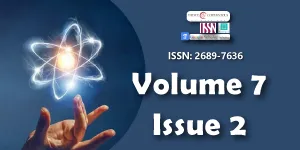The Riemann's Hypothesis, the Prime Numbers Theorem (PNT), and the Error
Main Article Content
Abstract
In this simple paper, a small refinement to the Prime Number Theorem (PNT) is proposed, which allows us to limit the error with which said theorem predicts the value of the Prime-counting function π(x); and, in this way, endorse the veracity of the Riemann Hypothesis.
Many people know that the Riemann Hypothesis is a difficult mathematical problem - even to understand - without a certain background in mathematics. Many techniques have been used, for more than 150 years, to try to solve it. Among them is the one that establishes that, if the Riemann hypothesis is true, then the error term that appears in the prime number theorem can be bounded in the best possible way.
Downloads
Article Details
Copyright (c) 2024 Carlos A Correa IM.

This work is licensed under a Creative Commons Attribution 4.0 International License.
Licensing and protecting the author rights is the central aim and core of the publishing business. Peertechz dedicates itself in making it easier for people to share and build upon the work of others while maintaining consistency with the rules of copyright. Peertechz licensing terms are formulated to facilitate reuse of the manuscripts published in journals to take maximum advantage of Open Access publication and for the purpose of disseminating knowledge.
We support 'libre' open access, which defines Open Access in true terms as free of charge online access along with usage rights. The usage rights are granted through the use of specific Creative Commons license.
Peertechz accomplice with- [CC BY 4.0]
Explanation
'CC' stands for Creative Commons license. 'BY' symbolizes that users have provided attribution to the creator that the published manuscripts can be used or shared. This license allows for redistribution, commercial and non-commercial, as long as it is passed along unchanged and in whole, with credit to the author.
Please take in notification that Creative Commons user licenses are non-revocable. We recommend authors to check if their funding body requires a specific license.
With this license, the authors are allowed that after publishing with Peertechz, they can share their research by posting a free draft copy of their article to any repository or website.
'CC BY' license observance:
|
License Name |
Permission to read and download |
Permission to display in a repository |
Permission to translate |
Commercial uses of manuscript |
|
CC BY 4.0 |
Yes |
Yes |
Yes |
Yes |
The authors please note that Creative Commons license is focused on making creative works available for discovery and reuse. Creative Commons licenses provide an alternative to standard copyrights, allowing authors to specify ways that their works can be used without having to grant permission for each individual request. Others who want to reserve all of their rights under copyright law should not use CC licenses.
Petersen BE. Prime number theorem. 1996. Available from: https://www.math.ucdavis.edu/~tracy/courses/math205A/PNT_Petersen.pdf
Bombieri E. Problems of the millennium: the Riemann hypothesis. 2000. Available from: https://www.claymath.org/wp-content/uploads/2022/05/riemann.pdf
Titchmarsh EC, Heath-Brown DR. The theory of the Riemann zeta-function. 1986. Clarendon Press, University of Oxford. Available from: https://sites.math.rutgers.edu/~zeilberg/EM18/TitchmarshZeta.pdf
von Koch H. Contribution à la théorie des nombres premiers. Acta Math. 1910;33:293–320. Available from: https://doi.org/10.1007/BF02393216
Schoenfeld L. Available from: https://academia-lab.com/enciclopedia/lowell-schoenfeld/
Goldstein LJ. A history of the prime number theorem. Am Math Monthly. 1973;80(6):599–615. Available from: https://www.math.fsu.edu/~quine/ANT/2010%20Goldstein.pdf
De la Vallée Poussin. Cap III: The theorem of Hadamard and de la Vallée Poussin, and its consequences. Available from: https://sites.math.rutgers.edu/~zeilberg/EM18/TitchmarshZeta.pdf
Correa C. Gap between consecutive coprimes and gap between consecutive primes. Available from: https://www.academia.edu/23707567/Gap_between_consecutive_coprimes_and_Gapbetween_consecutive_primes
Narayan S, Corwin D. Improving the speed and accuracy of the Miller-Rabin primality test. MIT Primes USA. 2015. Available from: https://math.mit.edu/research/highschool/primes/materials/2014/Narayanan.pdf

